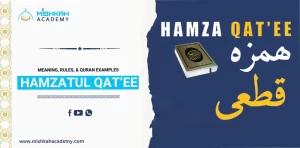Introduction How To Teach Non Arabic Speakers
Teaching the Quran to non-Arabic speakers is a noble endeavor that requires unique strategies and approaches. The Quran holds immense significance for Muslims around the world, regardless of their native language. However, for those who do not have a strong foundation in Arabic, understanding and connecting with the teachings of the Quran can pose challenges. This article aims to explore the intricacies of teaching the Quran to non-Arabic speakers and provide insights into developing effective methods, leveraging technology, fostering comprehension, and creating an inclusive learning environment. By implementing the strategies outlined here, educators can empower non-Arabic speakers to deepen their understanding and appreciation of the Quran’s timeless wisdom and guidance.
1. Teaching Quran to Non-Arabic Speakers
Teaching the Quran to non-Arabic speakers is a noble endeavor that aims to make the teachings of Islam accessible to a wider audience. While Arabic is the language of the Quran, it is important to bridge the gap for those who do not speak Arabic fluently. In this article, we will explore the importance of teaching the Quran to non-Arabic speakers and understand the need for specialized approaches to effectively convey its message.
1.1 The Importance of Teaching Quran to Non-Arabic Speakers
The Quran holds immense significance for Muslims around the world, as it is considered the word of Allah. By extending the opportunity to learn from it to non-Arabic speakers, we promote inclusivity and ensure that the message of Islam reaches a wider audience. Teaching the Quran to non-Arabic speakers opens doors to understanding, tolerance, and mutual respect among diverse cultures and backgrounds.
1.2 Understanding the Need for Specialized Approaches
Teaching the Quran to non-Arabic speakers requires a different approach than teaching it to native Arabic speakers. Non-Arabic speakers often face unique challenges, such as language barriers, cultural differences, and a lack of familiarity with Arabic script and pronunciation. Therefore, it is essential to develop specialized strategies and methodologies that cater to their specific needs.
2. Understanding the Unique Challenges of Teaching Quran to Non-Arabic Speakers
Teaching the Quran to non-Arabic speakers comes with its own set of challenges. It is important to recognize and address these challenges to ensure effective learning and comprehension.
2.1 Language Barrier and its Implications
The primary challenge faced by non-Arabic speakers is the language barrier. Arabic is a complex language, and understanding its intricacies can be daunting. It is crucial to simplify the language, provide clear explanations, and use translations to facilitate understanding.
2.2 Cultural Differences and their Impact on Learning
Cultural differences can also pose challenges in teaching the Quran to non-Arabic speakers. The Quranic teachings are embedded within the Islamic culture, which may differ from the cultural backgrounds of non-Arabic learners. Recognizing these differences and adapting teaching methods to accommodate diverse cultural perspectives can enhance learning and engagement.
2.3 Lack of Familiarity with Arabic Script and Pronunciation
Non-Arabic speakers often struggle with the Arabic script and pronunciation. The unfamiliarity with Arabic letters and sounds can hinder the ability to read and recite the Quran accurately. Providing resources, such as transliteration guides and audio recordings, can aid in overcoming these challenges and mastering the correct pronunciation.
3. Developing an Effective Curriculum for Quranic Education
To teach the Quran effectively to non-Arabic speakers, a well-designed curriculum is essential. This curriculum should address the unique needs of the learners and ensure a comprehensive understanding of the Quranic teachings.
3.1 Setting Clear Learning Objectives
Setting clear learning objectives is crucial to guide the teaching process. These objectives should outline the desired knowledge and skills that students should acquire, enabling a systematic and structured approach to Quranic education.
3.2 Sequencing Curriculum to Facilitate Progression
Sequencing the curriculum in a logical and progressive manner helps students build upon their knowledge and skills incrementally. Starting with foundational concepts and gradually introducing more complex topics ensures a smooth learning experience.
3.3 Incorporating Engaging and Relevant Content
To maintain student engagement and motivation, it is important to incorporate content that is relatable, practical, and relevant to the lives of non-Arabic speakers. Real-life examples, stories, and practical applications of Quranic teachings help learners connect the lessons to their own experiences.
4. Utilizing Technology and Resources for Teaching Quran to Non-Arabic Speakers
In the digital age, technology and resources play a vital role in enhancing the teaching and learning experience. Utilizing various digital tools and resources can greatly support the process of teaching the Quran to non-Arabic speakers.
4.1 Exploring Digital Tools and Applications
There is an abundance of digital tools and applications available that offer interactive learning experiences, such as Quranic learning apps, online dictionaries, and audio recitations. Exploring these resources can provide additional support and engagement for non-Arabic speakers.
4.2 Online Resources for Quranic Education
The internet offers a vast array of online resources for Quranic education, including websites, videos, and forums dedicated to teaching the Quran to non-Arabic speakers. These resources can offer supplementary materials, study guides, and opportunities for discussion and clarification.
4.3 Audio-Visual Materials and Interactive Learning
Audio-visual materials, such as video lessons and multimedia presentations, can enhance the learning experience for non-Arabic speakers. Visual aids, animations, and interactive exercises help reinforce concepts, improve comprehension, and make the learning process more enjoyable.
Teaching the Quran to non-Arabic speakers requires patience, understanding, and a thoughtful approach. By recognizing the unique challenges and tailoring the teaching methods accordingly, we can create an inclusive and enriching learning experience for all.
5. Strategies for Enhancing Comprehension and Pronunciation of Arabic Texts
5.1 Breaking Down Complex Concepts into Understandable Parts
Learning the Quran can be overwhelming, especially for non-Arabic speakers. One effective strategy is to break down complex concepts into understandable parts. Instead of bombarding students with a whole verse or chapter, focus on dissecting the text into smaller, manageable portions. This allows learners to grasp the meaning and significance of each section, making it easier to comprehend and memorize.
5.2 Incorporating Visual Aids and Illustrations
As humans, we are visual creatures. Incorporating visual aids and illustrations can greatly enhance the learning experience. Use diagrams, pictures, or even hand gestures to visually represent various Arabic words and concepts. This not only helps with memorization but also promotes a deeper understanding of the Quranic text. Plus, it makes the learning process more engaging and enjoyable.
5.3 Exercises and Activities for Practicing Pronunciation
Pronouncing Arabic words correctly can be a challenge, but with the right exercises and activities, it becomes much easier. Encourage students to practice pronunciation through tongue twisters, repetitive chanting, and various speaking drills. You can also utilize online resources and audio recordings to provide examples of proper pronunciation. Remember, practice makes perfect, so don’t be afraid to get interactive and have fun while learning.
6. Fostering a Love for Quranic Studies among Non-Arabic Speakers
6.1 Creating Meaningful Connections with Quranic Texts
To foster a love for Quranic studies, it’s important to help non-Arabic speakers connect with the text on a personal level. Relate the teachings and stories to their everyday lives, showing them how the Quran is relevant and applicable in their own contexts. By creating meaningful connections, students will develop a deeper appreciation for the beauty and wisdom of the Quran.
6.2 Encouraging Personal Reflection and Application
Encourage non-Arabic speakers to reflect on the verses they are learning and how they can apply them to their lives. Encourage discussions and journaling to allow students to express their thoughts, questions, and insights. By engaging in personal reflection and application, learners develop a stronger connection to the Quran and its teachings, making their learning experience more meaningful and transformative.
6.3 Promoting a Positive and Enriching Learning Experience
Learning the Quran should be a positive and enriching experience for non-Arabic speakers. Create an environment that is supportive, encouraging, and inclusive. Celebrate small achievements, provide constructive feedback, and foster a sense of camaraderie among students. Remember to infuse your teaching with humor and enthusiasm, making the learning process enjoyable and memorable.
7. Creating a Supportive and Inclusive Learning Environment
7.1 Cultivating a Safe and Respectful Classroom Culture
In order to create a supportive and inclusive learning environment, it’s essential to foster a safe and respectful classroom culture. Encourage open dialogue, where students feel comfortable expressing their opinions and asking questions. Emphasize the importance of respect and kindness towards one another, regardless of background or skill level. This will create an atmosphere where everyone feels valued and heard.
7.2 Addressing Individual Learning Needs
Recognize that each student has unique learning needs and abilities. Some may require additional support or alternative teaching methods. Be attentive to individual differences and provide personalized guidance when necessary. By addressing individual learning needs, you create an inclusive space where every student can thrive and succeed.
7.3 Collaborative Learning and Peer Support
Encourage collaborative learning and peer support among non-Arabic speakers. Pair students up for group activities, discussions, and study sessions. This allows them to learn from one another, share their insights, and support each other’s progress. Collaborative learning also fosters a sense of community and teamwork, making the journey of learning the Quran more enjoyable and fulfilling.
Conclusion
Remember, teaching the Quran to non-Arabic speakers is not just about transferring knowledge, but also about creating a meaningful and transformative learning experience. By implementing these strategies and creating a supportive environment, you can help students develop a deep love and understanding of the Quran, regardless of their Arabic language proficiency. So, let’s embark on this beautiful journey together!In conclusion, teaching the Quran to non-Arabic speakers requires patience, creativity, and a deep understanding of their unique learning needs.
By recognizing the challenges they face and implementing specialized approaches, educators can help bridge the language barrier and foster a genuine connection with the Quran. Leveraging technology, creating supportive environments, and employing effective teaching strategies, we can empower non-Arabic speakers to embark on a fulfilling journey of Quranic education. With dedication and perseverance, we can ensure that the profound teachings of the Quran reach individuals from diverse linguistic backgrounds, enabling them to enrich their lives and find solace in the timeless wisdom it offers.
FAQs
1. Are there any specific challenges when teaching the Quran to non-Arabic speakers?
Non-Arabic speakers face several challenges when learning the Quran, including language barriers, unfamiliarity with Arabic script and pronunciation, and cultural differences. These challenges can impact comprehension and hinder their ability to connect with the teachings of the Quran. However, with appropriate strategies and approaches, these challenges can be overcome.
2. How can technology aid in teaching the Quran to non-Arabic speakers?
Technology offers valuable tools and resources for teaching the Quran to non-Arabic speakers. Digital applications and online resources provide interactive learning experiences, audio-visual materials, and opportunities for practice and engagement. These technological advancements can enhance comprehension, pronunciation, and overall learning outcomes, making the process more engaging and effective.
3. How can educators create an inclusive learning environment for non-Arabic speakers?
Creating an inclusive learning environment requires understanding and addressing the unique needs of non-Arabic speakers. Educators can foster inclusivity by cultivating a safe and respectful classroom culture, accommodating individual learning needs, and promoting collaborative learning and peer support. Encouraging open dialogue, embracing diversity, and providing opportunities for personal reflection can contribute to a positive and enriching learning experience for non-Arabic speakers.
4. What role does fostering a love for Quranic studies play in teaching non-Arabic speakers?
Fostering a love for Quranic studies among non-Arabic speakers is crucial for their long-term engagement and meaningful connection with the Quran. By making the learning experience enjoyable, meaningful, and relevant, educators can inspire a genuine passion for Quranic studies. Encouraging personal reflection, exploring real-life applications, and highlighting the beauty and wisdom of the Quran can ignite curiosity and deepen the students’ love for this sacred text.





